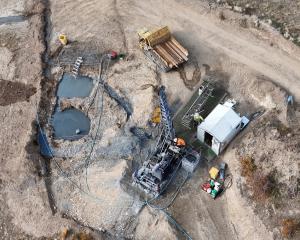NZIER senior economist Christina Leung said recent activity indicators suggested slightly softer growth for the next 12 months, but demand would still hold up "reasonably well".
Releasing the consensus forecasts - which are an average of New Zealand economic forecasts compiled from a survey of financial and economic agencies -
Ms Leung said expectations of weaker household and Government spending over the next two years drove much of the moderation.
Household spending had been strong in recent years but there were signs it was starting to slow as consumer confidence eased.
Annual GDP was expected to peak at 3.1% for the year to March 2020 before dropping to 2.7% by 2022, averaging 2.9% to 2020.
Annual growth in household spending was expected to ease to 2.5% by March 2022. Although the strong labour market was expected to support household income and, in turn, spending, there was likely to be some offset from slowing population growth, she said.
The outlook for investment had been revised up for the coming year.
"This is largely a timing issue. Forecasters now expect a faster ramp up in residential construction, but weaker activity in subsequent years," she said.
Capacity constraints in the construction sector remained a key uncertainty weighing on the construction outlook. The uncertainty was reflected in the wide variation in the forecasts, Ms Leung said.
Export growth forecasts had been revised up for the coming year but were lower in subsequent years.
A rise in global growth and a lower New Zealand dollar were supporting export demand. Increasing trade tensions were weighing on the export outlook.
Annual export growth was expected to peak at 3.5% in March 2020 before easing to 2.6% by 2022.
Ms Leung said the dollar had depreciated recently, following the Reserve Bank's indication in its August monetary policy statement it would likely to keep the official cash rate on hold at its record low of 1.75%.
The central bank also highlighted the potential for an OCR cut if economic growth did not pick up as much as it forecast, reducing the yield attractiveness of the New Zealand dollar.
Forecasters expected annual inflation to rise to 2% in March next year and track at that level in subsequent years, she said.
The labour market was expected to remain tight.
Businesses still wanted to hire but labour shortages remained acute.
With slowing net migration, the unemployment rate was expected to remain low.
Consensus forecasts were for annual employment growth to moderate to 1.5% by 2022 and for the unemployment rate to edge down to 4.1% because of weaker labour supply growth, Ms Leung said.
National Party finance spokeswoman Amy Adams said the NZIER report confirmed another decline in New Zealand's economic outlook.
"This is deeply concerning for the New Zealand economy at a time when most of our comparator countries, like the United States and Australia, are speeding up."
The Government could not ban oil and gas exploration, reduce labour market flexibility, increase union powers, ban foreign investment, and create high levels of uncertainty with more than 150 working groups, including the prospect of more taxes via the tax working group, without there being a significant downward effect on the economy, she said.












